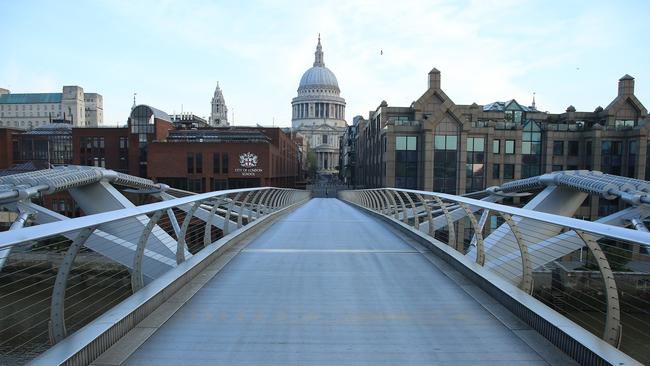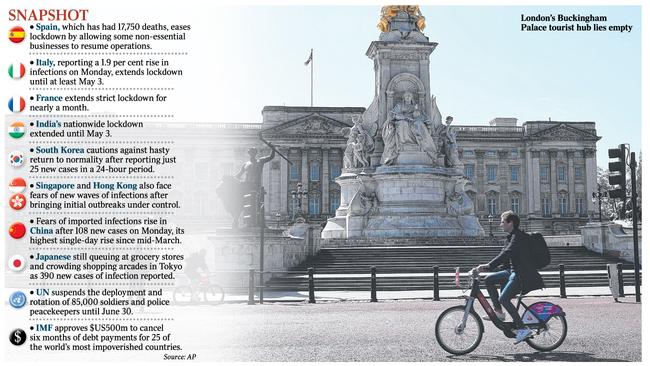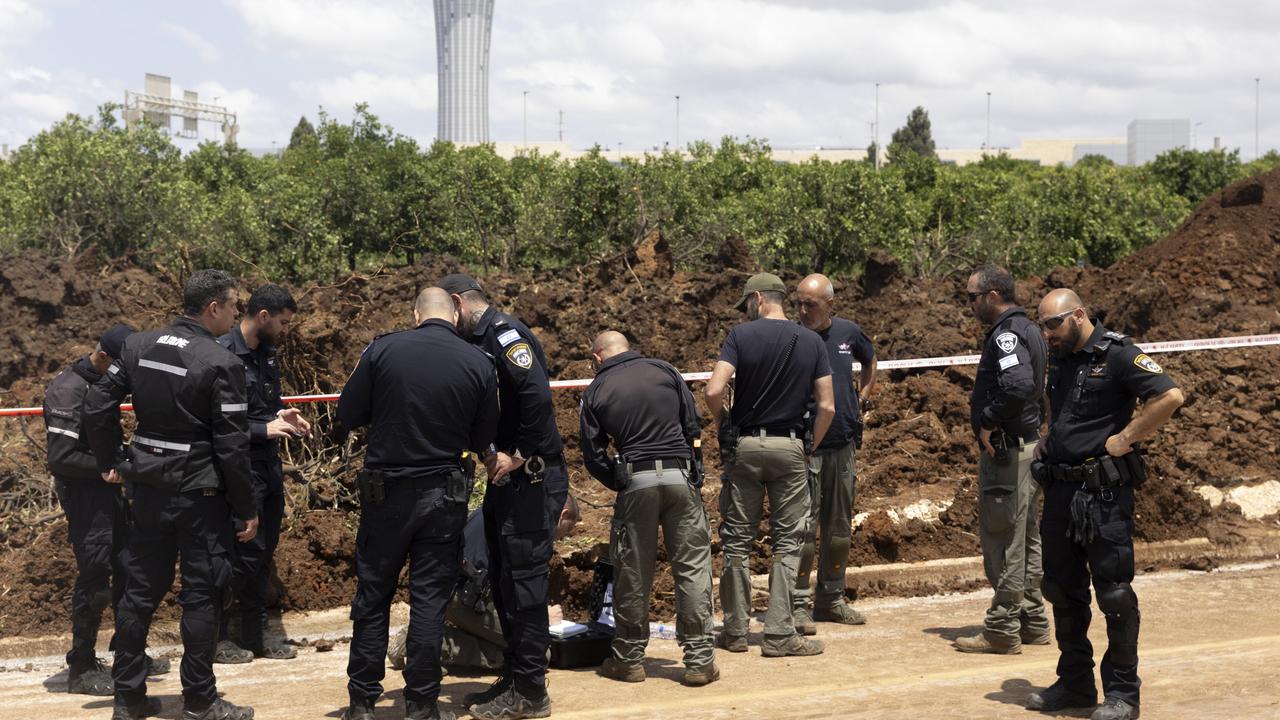Like Boris Johnson, Britain may be through the worst
Despite deaths nudging 900 a day, there is a sense that Britain might soon be through the worst part of the COVID-19 pandemic.

Australians keep looking at the British COVID-19 death toll of almost 11,500 — nudging, at times, 900 a day — and are horrified, yet there is a sense Britain might soon be through the worst of this pandemic.
Britain, even with its historic reference points such as the IRA, Islamic terrorism, and the Blitz, certainly finds its coronavirus death toll high, but it is less than what was originally predicted. Borders are still open but isolation measures are fierce.
Officially, the British strategy is “Stay Home, Protect the National Health Service, Save Lives’’.
Such has been the success of the shutdown, politicians are having to reassure people that it’s OK to go to hospital even for non-coronavirus care. Health Secretary Matt Hancock says there are more than 2000 spare critical care beds across the nation.
Chief Scientist Patrick Vallance says the curve has been flattened. The past three weeks have bought time for the government to secure more ventilators, build makeshift hospitals and provide reassurance to people that if they get the virus, they will get help.
But this is a virus in which the most extreme degrees of hospital care don’t offer much. People are not dying for want of medical attention; instead it is underlying health conditions and the state of immune systems that determine results. Prime Minister Boris Johnson says the NHS saved his life; being put on an oxygen mask helped him breathe. If he’d needed a ventilator, his odds of survival would have plummeted to 50 per cent.
Scientists are still trying to work out if recovering in the comfort of home and not being subject to potential viral load of the disease from others is better than going to a hospital.
With effective treatments still unclear, the British government is still promoting a confusing message. It is implying that delaying the point when someone gets the virus — by staying at home and not infecting others, or avoiding being infected — will save lives. Yet at the moment there is no difference to the outcome if the patient got the virus three weeks ago or gets it tomorrow.
Mr Johnson said the whole idea of the isolation campaign was to help the hospital system manage. And it is managing, yet the isolation measures remain.
One high-risk exit strategy, of waiting for a vaccine, will be worse economically as well as healthwise, and it’s unlikely the country will go down this path.

It is worth remembering there is still no vaccine for malaria, and experts say there is only a 5-10 per cent chance of any one coronavirus vaccine model proving effective. Only two are in clinical trials around the world, although up to 60 are in pre-clinical trial phase.
Britain’s week-long delay in March before shutting down the country — initially hoping the disease would spread through the community and provide herd immunity — has resulted in a quasi hybrid model.
It has roared throughout London and other major cities such as Birmingham because of the crowded public transport system and density of living. Like Sweden, which has gone for herd immunity, it is hoped Britain can get through the peak in the next week, then lockdown measures can be wound back.
Some scientists and modellers predict that eventually most countries will end up with a similar rate of infection and death, but spread out over differing degrees of time.
Two studies have shown the prevalence of the disease may be more widespread than first thought, but hidden.
In the northern Italian town of Vo, when the first person was infected with COVID-19 the entire population of 3300 was tested, revealing 3 per cent already had the disease, yet most of them were completely asymptomatic.
Last week, Icelandic company deCODE genetics said it had successfully tested 10 per cent of the country’s 360,000 people — picked randomly from the phone book — and found just under 1 per cent of the population was infected. But of those infected, half were asymptomatic. That’s double the rate that scientists previously believed people had the virus but showed no symptoms.
Iceland, which has 1711 cases and eight deaths, has enacted some moderate lockdown measures, with gatherings of up to 20 people allowed. The deCODE scientists say the number of new cases in the country is also falling.
Sir Patrick believes the number of people infected across Britain is in the low teens. At 10 per cent, that would be 6.7 million people.




To join the conversation, please log in. Don't have an account? Register
Join the conversation, you are commenting as Logout